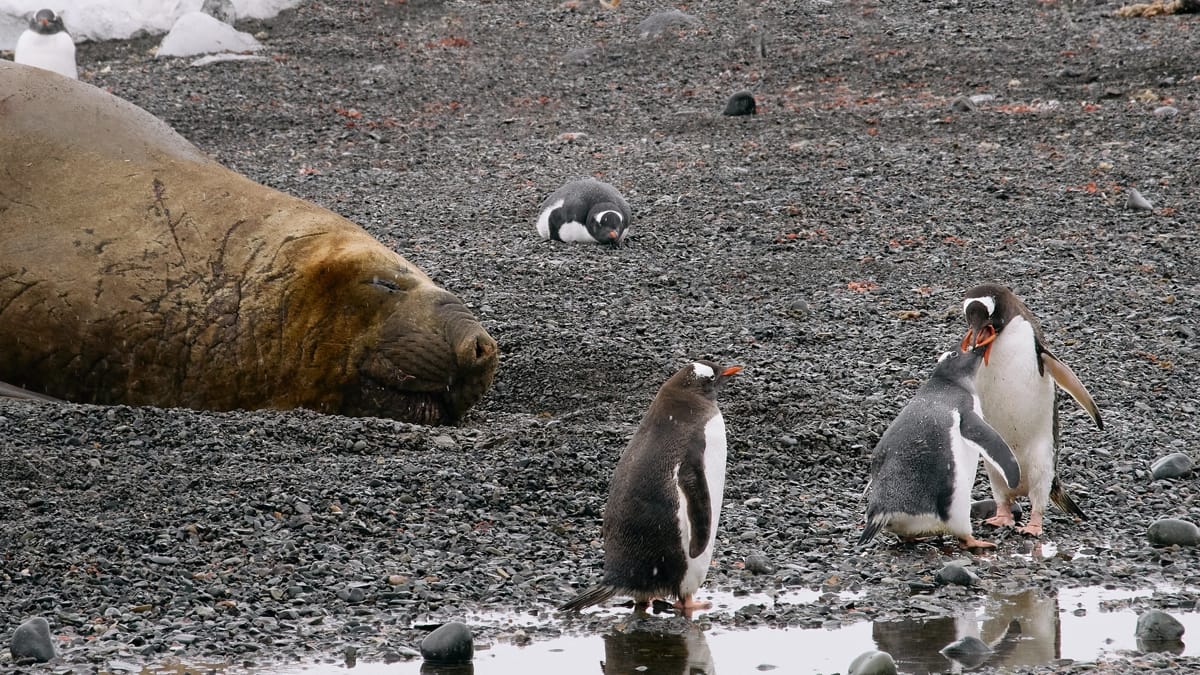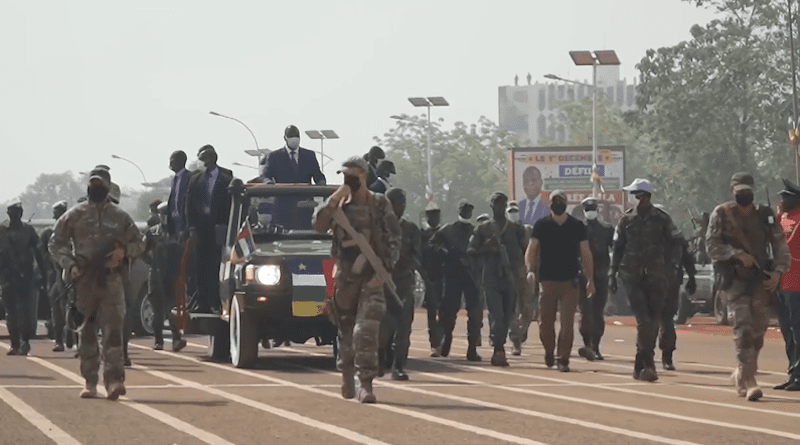
Unconventional Actors Undermine Security Structures In Africa: Russia’s Wagner Group As A Case Study – Analysis
By Dr. Mohammed Issam Laaroussi
Africa is facing different kinds of threats embodied the structural crisis due to the reign of the autocratic regimes whom are governing during several decades in Africa, particularly after the Military pushes. As a feature of the authoritarian regimes, those fragilized countries are a subject of the polarization game of both the interference of actors’ states and non-actors states like the private companies of security, militias and criminal groups. All those actors are contributing in the chaos status in the African continent, the synergy of the chaotic circumstances pave the way to other actors to sit in the African space to help their countries security agenda and to exert their relevance in the main African countries.
The hybrid conflicts in Africa reveal two fundamental characters of challenges the traditional hybrid challenges (1) to modern state functioning (as known today from current conflicts), against which national and international actors (African Union, NATO, European Union) can shore up defenses from provisions to active defense (2); hybrid challenges that specifically target states already in fragile conditions, against which there will be no effective national counterbalance due to failing state functions and institutions.
In the latter case hybrid challenges will exacerbate the systemic pressures (lack of security, stability, services) in these fragile states, increasing the role of non-state actors as stakeholders in providing security. The most African states will be battling the effects of population boom and all related scarcities, including water and sanitation, food, housing, employment etc., resulting in governance failure and increasing the likelihood of evolving such ungoverned/contested spaces in Africa which we have witnessed in Iraq and Syria after 2014.
Due to weak governance and extensive corruption, hybrid actors are more deeply entangled with transnational organized criminal groups, which serve as enablers for the hybrid actor. In turn, criminal groups profit from the hybrid campaign while enhancing their ability to operate with impunity.
In this insight, we seek to examine the role of the hybrid wars and the private companies of security in undermining the security conditions in the continent. The piece will focus as well on the main strategies of non-state actors in the international competition and their dynamism in filling the gap of the colonial countries in Africa which are facing the challenges to save their relevance in this vital space. In this context France is about losing its strategic weight in Africa. Instead of that, Russia and China are increasing their presence in the African landscape through the hybrid war using basically the private security companies. This study will focus as well on the role of the Russian Wagner group in exacerbating the sub-regional security system in Africa.
1) Concept of the Hybrid war: threats of international security
The original concept of hybrid threats first gained recognition when Hezbollah had some concrete military success against the Israeli Defense Forces (IDF) in Lebanon 2006 during the Second Lebanon War. (3) Paradoxically, the definition of ‘hybrid’ then was that a non-state actor showed military capabilities one originally only associated with state actors. (4) Multimodal, low-intensity, kinetic as well as no kinetic threats to international peace and security includes cyber war, asymmetric conflict scenarios, global terrorism, piracy, transnational organized crime, demographic challenges, resources security, retrenchment from globalization and the proliferation of weapons of mass destruction. Such (multi-)modal threats have become known as ‘hybrid threats’. (5)
Today’s civil wars are becoming more frequent, more harmful to civilians and harder to resolve. Why are sustainable peace outcomes proving more elusive? One contributing factor to these trends may be the increasing use of pro-government militias conflicts (PGMs) in armed conflict.
Auxiliary forces have played crucial roles in helping governments win back territory, weaken rebel forces or consolidate battlefield strength. They are a quick and cheap means of mobilizing force and may offer unique local knowledge and intelligence, building greater traction among contested communities or constituencies. In some situations, States may turn to PGMs to outsource the “dirty work” of war while maintaining plausible deniability for human rights violations. However, the use of pro-government Militias and conflicts carries significant risks in terms of post-conflict peace and stability. (6)
Despite NATO’s failure to agree to a joint and comprehensive approach in countering hybrid threats, there is little doubt that “hybrid threats are here to stay”. Even a mainly conventional war will have a ‘hybrid’ element such as for example a ‘cyber-attack’, ‘bio-hacking’, and even ‘nano-applications’. Old threats, such as nuclear threats, can these days be reconsidered as within reach for state actors. Warnings have already been made that even a nuclear technology might be in danger of being used by terrorist organizations. (7)
Basically, the differences between the conflicts were probably insubstantial: what really changed was the perspective of the West. In the 1990s, blinded by a period of integration, prosperity and the perception of victory at the end of the Cold War, the United States and its Western allies failed to understand the wars being waged by others over territory, economic and strategic interests, identity and religion (Bargués-Pedreny, 2018). But in the 2000s, with the «Global War on Terrorism» in full sway, the rise of hybrid tactics brought an end to the «self-delusion» of the 1990s, when it was believed that international institutions could limit and regulate peace and war (Johnson, 2018: 143).
So far, hybrid threats were contaminating peaceful areas as much as conflict zones. In 2014, «little green men» in unmarked uniforms entered Crimea to take control of infrastructure, facilitate a referendum and annex Ukrainian territory for Russia. The evidence of continual cyber-attacks, disinformation campaigns, interference in democratic processes and the mobilization of migrants at the European Union’s external borders have seriously harmed EU–Russia relations. Hybrid attacks blur the boundaries between war and peace. They exploit the opportunities of an interconnected and globalized world to weaken the adversary without expending resources on the conventional battlefield (8) (Colom Piella, 2018).
Recent conflicts and wars have developed other principles, opponents no longer being separated by tens and hundreds of kilometers away from the line of contact. Nowadays, there is a convergence of opponents, methods and means as well as a fusion of capabilities within hybrid wars. These wars do not comply with any categorization criterion, incorporating conventional, unconventional, military and non-military capabilities, combined tactics, terrorism and criminal disorder.
Currently, there are opinions that the war of the future will be nameless and involving a faceless enemy (9) or that it will be “hybrid” (combination of classical and unconventional warfare to create difficulties to the armies of powerful states that cannot be defeated through classical confrontation conducted according to the laws of war). NATO defines “hybrid warfare” as the war with a wide range of hostile actions in which the military force is only a small part and which are executed together as part of a flexible strategy with long-term goals. The most lucid description of this concept comes also from the Russians – in February 2013, Valery Gerasimov, Chief of Staff, published an article in the journal of Russian Defense VPK. War and peace, wrote Gherasimov, are becoming increasingly mixed.
Methods of conflict have changed and now involve a large use of political, economic, informational, humanitarian and other non-military measures. All of these, may be supplemented by stirring the local population and using disguised armed forces. “We need to start thinking about security in a more sophisticated and in a more comprehensive manner”, said Robin Niblett, director of Chatham House, referring to politics, citizenship, multinational corporations, energy markets and crime as the new strategic borders.
In a world of hyper-competition, of hybrid war or nonlinear conflict, “we must find new forms of deterrence”, concluded Niblett. It has been demonstrated throughout history that wars (regardless of their extent) are great consumers of resources, especially financial and human ones. The statistics of the Second World War mainly qualified it as, by far, the biggest war in history in terms of expense of people and material resources. In total, 61 countries with 1.7 billion people, three-quarters of the world population took part in it. Since the hybrid war cannot be defined in time and space, risks should be assessed. They may be: military: the arms race, NMA proliferation and nonmilitary: impoverishment of certain ethnic or religious communities, environmental degradation, massive illegal immigration, spread of extremist ideas, ineffective government.
Depending on their area of operation these risks may be: political and military, social, cultural, ethnic, demographic, and military, etc. Depending on their intensity, risks and threats may be short-term as well as medium or indefinite term. In terms of the number of people affected, risks and threats are: small scale (relatively small number of people); medium-scale (relatively high number of people); large scale (high number of people). The mode of manifestation of risks depends on the area where they happen, the ethnicity, the religion of the ones generating them, level of education of the initiators.
Therefore, risks can be: – violent: the use of conventional military action, with the use of unconventional military action or terrorist means and methods; – nonviolent: non-military threats of political, economic, social and cultural nature. The contemporary hybrid war is novelty that it involves simultaneous success on all “battlefields”, which implies the presence of populations. It is carried in populated conflict areas populated with public participation, in front of the international community’s eyes. Hybrid War is “combinations of symmetric and asymmetric armed conflicts in which military intervention forces conduct traditional military operations against enemy forces and targets while simultaneously and decisively acting to get control of the indigenous population of the area of operations by stability operations. (10)
2) Conventional Warfare versus ‘Hybrid Threats
The term ‘hybrid warfare/threat’ itself had already been included in the West’s military lexicon before Russia’s so-called ‘hybrid warfare’ campaign against Ukraine. Itwas F rank Hoffman (11) who popularized the concept of ‘hybrid warfare’ in the military debates in the mid-2000s. In short ,Hoffman used the term ‘hybrid warfare’to refer tothemerger of regular and irregular modes of warfare in the same battleground. According to his conception, ‘hybrid threats’ include states that carry out irregular forms of warfare, using swarming tactics and operations, and politically motivated violent non-state actors employing sophisticated military capabilities normally associated with nation-states. the notion of ‘hybrid warfare’, as characterized by Hoffman, has provided a useful analytical framework because it challenges the traditional paradigms based on the false dichotomy between conventional and irregular warfare. (12)
However, ‘hybrid warfare’ has been subjected to conceptual stretching over time, and thus, has gained new meanings. Without a doubt, the most important milestone in the evolution of the concept of ‘hybrid warfare’ is Russia’s intervention in Ukraine in 2014. Sincethe Russian way of warfare employed against Ukraine did not fully fit previous definitions of ‘hybrid warfare’, the connotations of the concept were significantly changed. Accordingly, since then, ‘hybrid warfare’ has often been characterized as a way of achieving political objectives by any blend of kinetic and non-kinetic tools while remaining below the threshold of direct and large-scale military confrontation.
Alongside Russia’s aggression against Ukraine, activities of other revisionist states have sometimes been dealt with through a ‘hybrid warfare’ conceptual lens too. For example, Chinese bullying activities in the South China Sea, (13) consisting of using maritime militias called ‘little blue men’, conducting cyber-attacks, carrying out psychological operations, and building artificial islands have been considered an example of ‘hybrid warfare’. Likewise, the Iranian pursuit of regional hegemony in the Middle East, (14) including a mix of military and paramilitary activities, cyber warfare tools, and information operations has been linked to the concept of ‘hybrid warfare’.
Furthermore, although ‘hybrid warfare’ was generally codified as sub-threshold activities consisting of any mix of military and non-military tools after 2014, the term has also been used just to imply non-military destabilizing activities such as black propaganda, cyber-attacks, (15) election meddling (16), and using refugees as a political weapon. Actually, there is nothing ‘hybrid’ in the use of cyber operations or migrants as a tool of aggression given that an object and/or organism should consist of two different elements to be called hybrid. However, because ‘hybrid warfare’ has become a buzzword, all kinds of disruptive actions have been associated with the ‘hybrid model of warfare’
The non-classical tools often used in the hybrid wars are mainly taking profit the technology advances, so does the potential for its misapplication. One of the most significant concerns is the potential for AI-generated disinformation to manipulate public opinion. For example, an image generator could create a realistic-looking image of a political figure engaged in illegal activity – or an attack on the Pentagon – even if that activity never actually occurred. By targeting vulnerable individuals or specific demographics with tailored narratives, adversaries can exploit pre-existing divisions within societies and amplify distrust, ultimately eroding social cohesion. Some narratives may be used to target financial markets or influence decision makers. (17)
The synergy between AI-generated content and social media amplification presents a particularly potent threat. If a threat actor combines the generative capabilities of LLMs and image generators with botnets or scores of fake social media accounts, they can rapidly disseminate disinformation across platforms, creating the illusion of widespread support for a particular narrative. This can quickly saturate the information space with one narrative, drown out opposing viewpoints, manipulate public sentiment, and sway public opinion. Like in the Pentagon case, if a narrative is pushed as part of a larger effort, including more fake sources or additional images from different angles etc., the impact may be very considerable and difficult to debunk initially. The speed and scalability of AI-driven disinformation campaigns mean that even a small team can create an overwhelming volume of content, making it difficult for authorities and traditional fact-checking mechanisms to keep up. (18)
The development of hybrid warfare tools was facilitated by structural changes in modern international relations. These changes include the emergence of dense networks of interdependence, which are based on certain global goods — financial services, social media, digital services, value chains, industrial relations, etc. In such networks, critical nodes are formed, tied to providers of global goods. The majority of these providers are due to a number of circumstances, originated in Western countries. Gradually, the US and other states began to understand the political use of such critical nodes. American researchers Henry Farrell and Abraham L. Newman indicate that individual services can be used to collect huge amounts of information (for example, information about social network users, their activity and connections, banking transaction data, etc.). In addition, exclusion from such benefits can also be used as an instrument of political power. The most striking example is blocking financial sanctions, when certain persons in a hostile country may be deprived of the possibility of regular banking transactions. (19)
The United States has long been a target of hybrid warfare by states seeking to disrupt or influence U.S. decision-making. Hostile activities can be categorized under four paradigms: nullification of political actors – creating discord within a constituency so that it cannot effectively unify around a policy, or undercutting the credibility of a prominent policymaker who champions unwanted outcomes; assistance to anti-government movements – identifying elements in society which are willing to attack (rather than participate in) the policymaking process with vitriol or violence; fomenting distrust of the U.S. policymaking process, in order to sap its legitimacy; and appearing to fill needs / wants that the U.S. government cannot and thereby supplanting the U.S. government in a specific area. (Of course the countries that have been most active in this area – Cuba and Venezuela – have been unable to sustain their own states.) (20)
3) Africa the theatre of the Hybrid wars
The continent of Africa comes second in the number of armed conflicts per region with more than 35 non-international armed conflicts (NIACs) taking place in Burkina Faso, Cameroon, the Central African Republic (CAR), the Democratic Republic of the Congo, Ethiopia, Mali, Mozambique, Nigeria, Senegal, Somalia, South-Sudan and Sudan. Several armed groups – fighting against government forces and/or against each other’s – are involved in these conflicts. Western powers and/or neighboring countries are intervening in the NIACs that take place in Burkina Faso, Mali, Mozambique, Nigeria, and Somalia.
The Central African Republic is on the top of the list with several NIACs involving multiple armed groups. The Government is involved in NIACs against a wide array of rebel groups, including the anti-Balaka and the ex-Séléka. There are also parallel non-international armed conflicts due to the infighting between various armed groups. (21)
Africa is rapidly becoming a theatre for hybrid threats. Allegations of state-backed information campaigns designed to ramp up divisions in Mali and cyber-attacks on humanitarian relief organizations (22) such as the International Committee of the Red Cross (ICRC) are examples. The use of drones as weapons in the Horn of Africa, Sahel and Mozambique by violent armed groups, state actors or their proxies also signals this emerging trend.
Hybrid warfare combines conventional forms of armed conflict (kinetic attacks) with other strategic tools. These include information operations to influence and subvert or reframe events. They also involve cyber-attacks targeting computers directly or using the internet to carry out traditional crimes such as extortion and fraud.
Across Africa, hybrid weapons are being deployed in times of conflict and peace, undermining democracy and the rule of law. They’re also being used to raise finance for terrorist or criminal enterprises. An emerging threat on the continent is the use of information operations by state entities, their proxies and adversaries to secure a geostrategic advantage. (23)
4) The Russia’s Wagner Group in Africa: Case Study
The Wagner Group (WG) is a private military company (PMC) with strong ties to the Kremlin. In the past years, the WG has been a key strategic tool facilitating Russian engagement with African governments, providing political, military, and economic support to its client states such as the Central African Republic (CAR), Libya, and Mali. (24) Due to diplomatic isolation and Western sanctions following Russia’s war against Ukraine, the importance of the African continent in Russian foreign policy has increased. (25) In the past years, Russia has employed the WG’s military and security services as an alternative to Western armed forces and as a means to access economic resources through organized crime, including the smuggling of arms and natural resources. At the same time, the WG is of particular relevance to African authoritarian regimes, being part of a power-projection toolkit essential to their existence. (26)
In June 2023, the international community watched attentively the rebellion led by the WG’s leader, Yevgeny Prigozhin, against the Kremlin. Due to the tensions between the WG and Russia’s Ministry of Defence in Ukraine, a significant number of the WG’s fighters have been reallocated. Indeed, several are possibly in Belarus under the protection of Lukashenko’s regime. (27) In addition, the WG’s reallocation from Ukraine could potentially increase its presence in the African continent and redirect its efforts towards those countries. (28) This is particularly concerning because of the illicit activities of the WG in Africa and the violations of human rights committed by its fighters. Whereas there is a debate about the WG’s crimes, little attention has been given to the potential implications of the WG’s presence on the migration crisis from Africa to Europe.
The Wagner Group has established operations in several African countries, where many of its operations focus on security issues. It has often provided security services and paramilitary assistance and launched disinformation campaigns for troubled regimes in exchange for resource concessions and diplomatic support. Wagner is most active in the Central African Republic (CAR), Libya, Mali, and Sudan, all of which have a tenuous relationship with the West due to colonial legacies and inherent political differences. (29)
Wagner troops have supported African governments in combat operations against rebel groups, and vice versa. Approximately one thousand Wagner troops entered CAR in 2018 to defend the government (30) of President Faustin-Archange Touadéra against rebel attacks on the capital, Bangui. In return, Wagner subsidiaries received unrestricted logging rights and control of the lucrative Ndassima gold mine. Similarly, Wagner Group forces deployed to Mozambique in 2019 to help fight the self-proclaimed Islamic State in the northern Cabo Delgado province. However, the group failed to contain the insurgency (31) and withdrew from the area after a few months.
In some cases, Wagner’s involvement in Africa has resulted in alleged human rights violations (32) and exacerbated regional insecurity. In Libya, Wagner troops who fought alongside the Libyan National Army during its 2019 Tripoli campaign have been accused of committing extrajudicial killings and planting landmines (33) in civilian areas. More recently, the group has been reportedly supplying Sudan’s Rapid Support Forces militia (34) with missiles during its war against the Sudanese army. Wagner troops also operate in the same areas as the UN peacekeeping mission in CAR, threatening the United Nation’s ability to protect civilians.
Meanwhile, the group has continued to expand its foothold in the Sahel. Recently leaked U.S. intelligence has revealed that Wagner is working with Chadian rebels to oust the country’s transitional president, (35) and some analysts predict that Burkina Faso could soon hire Wagner to help counter a growing jihadi insurgency after France withdrew its troops from the country earlier this year.
Wagner adopted and further developed a similar strategy inspired from the hybrid war, the same which was used in Libya and Syria in Africa, where it has advised tottering leaders, run pro-government and disinformation campaigns, conducted military training and anti-insurgency operations, and, in return, secured concessions in extractive industries, (36) particularly gold, diamond, and uranium mining.
For instance, in CAR, at various times since 2018 up to 1,900 “Russian instructors” (37) (i.e., Wagner and its subsidiaries) have provided escort protection to the country’s senior officials, including President Touadéra, and have assisted the Russian MOD with arms deliveries and on-site military training. In return, the Kremlin has been able to explore “the possibilities (38) of the mutually beneficial development of Central African natural resources,” with Prigozhin-linked companies spearheading gold and diamond mining efforts in the republic.
In Sudan, Wagner has provided site security to Prigozhin-owned gold mining companies and has been actively involved in strengthening ties with General Mohamed Hamdan Dagalo (Hemedti), a deputy head of Sudan’s ruling council, to establish its first naval base (39) in Port Sudan. Similarly, in Libya, the Kremlin reportedly sent up to 1,200 (40) Wagner contractors to aid General Khalifa Haftar, a de facto ruler of eastern Libya in control of a significant share of the country’s oil reserves, (41) in exchange for securing economic concessions that included Russian oil giant Rosneft’s access (42) to the country’s lucrative oil market.
Wagner Group and Russian PMC activity in Africa generally involve payment through mining concessions, operated by companies such as Lobaye Invest, M Invest/Meroe Gold, and their affiliates. In CAR, Lobaye Invest manages “activities ranging from mining to beauty pageants and the screening of Russian movies.” Three journalists were killed before an attempt to film Wagner contractors at Lobaye Invest-operated gold mines in July 2020. Lobaye gained the gold and diamond mining concessions due to the PMC contract with Touadéra’s government, using PMC contractors as mine guards. Further, Touadéra employs Valery Zakharov as national security advisor, a Russian national with Russian military intelligence ties and Prigozhin financial links. (43) In Sudan, M Invest and Meroe Gold conduct mining operations, which were agreed upon at talks which Putin, Foreign Minister Medvedev, Defense Minister Shoygu, and former President al-Bashir attended. (44) Another Prigozhin company operated as the event’s catering service. PMCs guarding Meroe Gold’s mining operations also attacked local protestors.
5) Wagner`s group undermines the sub-region security system to insure Moscow relevance in Africa
Despite Wagner’s assertiveness on the continent, it is also important to step back and note that Russia is still a relative latecomer in efforts to revitalize relationships with African partners. (46) But the pace at which it has carved out influence via the Wagner Group is demonstrative of the importance of Africa for Moscow’s broader foreign policy objectives and illustrative of the havoc and instability it can create for a relatively small investment.
Additionally, outside of the extractive economic opportunities for wagner and Moscow and the ability to undermine support for democracy, both of which are quite pertinent to U.S. interests, Russia’s efforts to use Wagner for relationship-building with African partners are consequential in other areas like U.N. voting and durable security partnerships. (47) It is likely that Africa will only continue to grow in importance for the Kremlin, given its ongoing war efforts in Ukraine. This only heightens the likelihood that it will continue to rely on quasi-state forces like the Wagner Group to do its bidding on the continent.
Wagner’s efforts have already paid dividends for the Kremlin as Africa has arguably become increasingly segmented. (48) During the U.N. General Assembly’s March 2, 2022, vote to condemn Russian aggression in Ukraine, for example, though a majority of African countries (28) voted in the affirmative, 16 abstained and nine did not vote. (49) Perhaps unsurprisingly, Sudan, CAR, and Mali—countries that have established ties with Wagner—were among the abstentions. (50) More recently, President Zelensky’s virtual speech to the African Union on June 20, saw only four of the 55 African heads of state attend. (51)
While autocratic leaders and military juntas may see value in pursuing contracts with Wagner, other African states need to recognize the alarming consequences of pursuing relationships with PMCs like Wagner and cultivating relationships with Russia more generally. Though frustrations with the West have increased local support for enhanced relations with Russia, the Kremlin’s strategy via outsourcing through Wagner is one that reeks of exploitation.
One could argue that the West’s track record on the continent is also poor, but, as noted, Wagner has no genuine interest in actually addressing issues of instability for clients. Ironically, and as researchers have shown, it will benefit from a manageable level of instability that ensures continuity of a contract while enabling its network of businesses to continue their extractive onslaught on African economies. Along these lines, some analysts have recommended that African states revisit the Convention for the Elimination of Mercenarism in Africa, passed in 1977 by the Organization of African Unity (OAU) and which entered into force in 1985. (52) The convention essentially bans African states from entering into agreements with mercenaries and its reconsideration and application could help thwart the threats to sovereignty and stability that Wagner will surely continue to bring.
The Wagner Group will almost certainly continue to spearhead Moscow’s efforts to win influence in Africa. The United States and allied nations must be prepared to counter Wagner’s sustained efforts to undermine the rules-based international order and capitalize on democratic recession and state fragility/insecurity on the continent. They can do so by highlighting Wagner’s failings in places like Mozambique, countering Russian disinformation in places like Mali, sanctioning countries that partner with the Wagner Group, sustaining multilateral sanctions against the Russian Federation, tracking and advertising Wagner’s human rights violations, declassifying and releasing intelligence where helpful as the French recently did in Mali, investing in security force capacity-building to decrease the apparent allure of PMCs like Wagner, considering legal options for holding Wagner forces accountable for atrocities, and taking a whole-of-government approach to provide support and resources to civil-society partners across the region. (53)
Conclusion
Finally, this paper strives to combine “grievance” and “insatiability” models to explain the motivations for hybrid-wars and conflicts in general, while the conceptualization and the use of asymmetric warfare approaches in the African context of irregular war are questioned. Democratic values such as freedom, justice, equality and human dignity are lacking in conflict-ridden societies where unequal forces compete for political and economic control or control over scarce resources. Peace keeping operations cannot succeed unless the basis for equitable participation in, and the sharing of wealth and power is established in African societies.
In the same context, several approaches to mitigate the security dilemma in Africa embodied the Wagner Group involvement in the security scope is not without risks. For instance, sanctioning governments that contract with the Wagner Group runs the risk of pushing these states further into Russia’s orbit. Additionally, with the growing sanctions regime against Russia deepening the Kremlin’s isolation following its 2022 invasion of Ukraine, Moscow may need to put even greater emphasis on alternative markets. (54)
At the same time, there are opportunities for a host of African states, particularly those with substantial oil and natural gas capacity, to benefit from Russia’s economic ostracization as many European states continue to seek alternative energy markets to offset future energy crises. (55) The United States should work with African and European partners to facilitate efforts that are mutually beneficial while continuing to punish Russia economically. It should also emphasize, as President Zelensky did during his recent address to the African Union, that African governments run the risk of becoming “hostage” to Russia. (56) Though speaking about the Kremlin’s blockade against Ukrainian grain exports that jeopardizes food security globally, the point should resonate for those governments that have partnered with the Wagner Group as they are increasingly likely to become hostage to Russia for security and military support.
Endnotes:
- Tamas Csiki Varga, PhD is a defense policy analyst of Institute for Strategic and Defense Studies, Eötvös József Research Center, National University of Public Service. Source: https://svkk.uni-nke. hu/document/svkk-uni-nke-hu-1506332684763/CSIKI_VARGA_Tamas_CV_ENG_2020_01_01.pdf
- Viktor Marsai, PhD Reearch Director of Migration Research Institute, his main research areas focus on the migration trends of the African continent and the security aspects of migration. Source: https://www.migraciokutato.hu/en/staff-member/viktor-marsai/ , his CV: https://archiv. netk.uni-nke.hu/document/netk-uni-nke-hu/MARSAI_Viktor_CV_ENG.pdf
- Hoffman, FG. Conflict in the 21st century: The rise of hybrid wars. Arlington, VA: Potomac Institute for Policy Studies, 2007, 37.
- See for example Matthews, MM. “We were caught unprepared: The 2006 Hezbollah-Israeli War”. The Long War Series Occasional Paper No 26. Fort Leavenworth, KS: US Army Combined Arms Center, Combat Studies Institute Press, 2008
- Idem
- Adam Day, Vanda Felbab-Brown & Fanar Haddad, , Hybrid Conflict, Hybrid Peace: How Militias and Paramilitary Groups Shape Post-conflict Transitions, 14 April 2020, the link: https://reliefweb.int/report/world/hybrid-conflict-hybrid-peace-how-militias-and-paramilitary-groups-shape-postconflict?gad_source=1&gclid=Cj0KCQiAy9msBhD0ARIsANbk0A8jpxk986ziLlxFlyRRONthIBL0gK8NffjhsYC2QkM2SOBALqDWhM4aAvxoEALw_wcB
- Sascha-Dominik Bachmann. HYBRID WARS: THE 21st-CENTURY’S NEW THREATS TO GLOBAL PEACE AND SECURITY, Bournemouth University, UKa Håkan Gunneriusson Swedish Defence University the link: https://ung.edu/institute-leadership-strategic-studies/_uploads/files/bachmann-gunneriusson-hybrid-wars-16-sep-2016-scientia-militaria.pdf
- Pol Bargues and Moussa Bourekba, War by all means: the rise of hybrid warfare, 09/2022, the link: https://www.cidob.org/en/articulos/cidob_report/n_8/war_by_all_means_the_rise_of_hybrid_warfare
- Adrian Mac Liman, Haosul care vine – război fără nume, inamic fără chip, Editura Maşina de Scris, Bucureşti, 2004;
- Daniel STEFANESCU , SIMILARITIES AND DIFFERENCES BETWEEN THE ARMED CONFRONTATIONS IN THE MIDDLE EAST AND UKRAINE, the link: http://journal.dresmara.ro/issues/volume6_issue1/09_stefanescu.pdf
- Tarek Solmaz, Conventional Warfare versus ‘Hybrid Threats’: An Example of the Either-or Fallacy, the link: https://smallwarsjournal.com/jrnl/art/conventional-warfare-versus-hybrid-threats-example-either-or-fallacy
- Sandor Fabian, IRREGULAR VERSUS CONVENTIONAL WARFARE: A DICHOTOMOUS MISCONCEPTION, 5.14.2021 the link: Irregular Versus Conventional Warfare: A Dichotomous Misconception – Modern War Institute (usma.edu)
- Sergio Miracola, Chinese Hybrid Warfare, 21 Dec 2018 the link: Chinese Hybrid Warfare | ISPI (ispionline.it)
- Melissa G. Dalton, How Iran’s hybrid-war tactics help and hurt it, 21 Aug 2017 the link: How Iran’s hybrid-war tactics help and hurt it: Bulletin of the Atomic Scientists: Vol 73, No 5 (tandfonline.com)
- Ethem Elbiz and Christian Kaunert, Cyber-attacks: what is hybrid warfare and why is it such a threat? July 21, 2021 the link: Cyber-attacks: what is hybrid warfare and why is it such a threat? (theconversation.com)
- Tillerson: Russian vote meddling was ‘hybrid warfare, Dec 13, 2017 the link: Tillerson: Russian vote meddling was ‘hybrid warfare’ – Euractiv
- Kristian Bischoff, AI tools in hybrid warfare – A double-edged sword, 30 May, the link: https://www.riskintelligence.eu/background-and-guides/ai-tools-in-hybrid-warfare-a-double-edged-sword
- Kristian Bischoff, Idem
- Ivan Timofeev, Hybrid War and Hybrid Peace, 03.10.2023, the link:https://valdaiclub.com/a/highlights/hybrid-war-and-hybrid-peace/
- Darren E. Tromblay, The Intelligence Studies Essay: “Hybrid Warfare” at Home: Asymmetric Tactics Are Not Just Used in Ukraine, They Are Employed againstthe United States, and Have Been for Quite Some Time Monday, August 29, 2016, the link: https://www.lawfaremedia.org/article/intelligence-studies-essay-hybrid-warfare-home-asymmetric-tactics-are-not-just-used-ukraine-they-are
- TODAY’S ARMED CONFLICTS, the link: https://geneva-academy.ch/galleries/today-s-armed-conflicts#:~:text=Photo%2FStuart%20Price,Burkina%20Faso%2C%20Cameroon%2C%20the%20Central%20African%20Republic%20(CAR),are%20involved%20in%20these%20conflicts.
- Cyber Attack on ICRC: what we know, 24 June 2022, the link: https://www.icrc.org/en/document/cyber-attack-icrc-what-we-know
- ISS: Hybrid warfare – Africa beware, ISS Africa – 6th April 2022, the link: https://www.defenceweb.co.za/
- Fasanotti, Federica Saini. “Russia’s Wagner Group in Africa: Influence, Commercial Concessions, Rights Violations, and Counterinsurgency Failure.” Brookings, 2022. https://www.brookings.edu/articles/russias-wagner-group-in-africa-influence-commercial-concessions-rights-violations-and-counterinsurgency-failure/
- Pokalova, Elena. “The Wagner Group in Africa: Russia’s Quasi-State Agent of Influence.” Studies in Conflict & Terrorism, July 2, 2023, 2. https://doi.org/10.1080/1057610x.2023.2231642
- Larsen, Karen Philippa , and Flemming Splidsboel Hansen. “Russia’s Comprehensive Approach and the Increased Use of the Wagner Group Challenges the West in Africa.” DIIS Danish Institute for International Studies, 2022. https://www.diis.dk/en/research/russias-comprehensive-approach-and-the-increased-use-of-the-wagner-group-challenges-the
- Millender, Michaela. “IntelBrief: The Wagner Group Finds a New Home in Belarus.” The Soufan Center, July 31, 2023. https://thesoufancenter.org/intelbrief-2023-july-31/?fbclid=IwAR2wQECKXnitUl8hjbZPdd-0tCHIHjN-YcWBOTSp4IQ4nX0_J2xxlrKI5Mc.
- Erling, Barbara, and Raphael Minder. “Poland Fears Wagner in Belarus Could Spark Migration Crisis.” Financial Times, 2023. https://www.ft.com/content/4ee8d1eb-2836-4e23-aaac-422a8dc06ddb
- William Rampe, What Is Russia’s Wagner Group Doing in Africa?May 23, 2023 the link : https://www.cfr.org/in-brief/what-russias-wagner-group-doing-africa#:~:text=The%20Wagner%20Group%20has%20established,resource%20concessions%20and%20diplomatic%20support.
- Wagner mercenaries sustain losses in fight for Central African Republic gold, The link: Wagner mercenaries sustain losses in fight for Central African Republic gold | Central African Republic | The Guardian
- Tim Lister and Sebastian Shukla, Russian mercenaries fight shadowy battle in gas-rich Mozambique The link: Russian mercenaries fight shadowy battle in gas-rich Mozambique | CNN
- CAR: Russian Wagner Group harassing and intimidating civilians – UN experts, 27 October 2021, the link: CAR: Russian Wagner Group harassing and intimidating civilians – UN experts | OHCHR
- Robert Uniacke, Libya Could Be Putin’s Trump Card, the link: Russia’s Wagner Group in Libya Pressures Europe on Oil (foreignpolicy.com)
- Nima Elbagir, Gianluca Mezzofiore, Tamara Qiblawi and Barbara Arvanitidis, Exclusive: Evidence emerges of Russia’s Wagner arming militia leader battling Sudan’s army, Fri April 21, 2023 the link: Sudan exclusive: Evidence emerges of Russia’s Wagner arming militia leader battling Sudanese military | CNN
- Michelle Gavin, The United States Should Not Play Russia’s Game in Africa, the link: The United States Should Not Play Russia’s Game in Africa | Council on Foreign Relations (cfr.org)
- Raphael parens, The wagner`s group playbook in Africa, March 18,2022, Foreign Policy Research Institute, the link: The Wagner Group’s Playbook in Africa: Mali – Foreign Policy Research Institute (fpri.org)
- David Ehl, Russia’s Wagner Group in Africa: More than mercenaries, 06/24/2023 the link: Russia’s Wagner Group in Africa: More than mercenaries – DW – 06/24/2023
- Florian Elabdi, Putin’s Man in the Central African Republic: Is Valery Zakharov at the Heart of Russian Skulduggery?Dec. 17, 2018, the link : Putin’s Man in the Central African Republic: Is Valery Zakharov at the Heart of Russian Skulduggery? (thedailybeast.com)
- Amy Mackinnon, Robbie Gramer and Jack Detsch, Russia’s Dreams of a Red Sea Naval Base Are Scuttled—for Now, JULY 15, 2022, Foreign Policy, the link: Russia’s Dreams of a Red Sea Naval Base in Sudan Is Scuttled—for Now (foreignpolicy.com)
- David Ehl, Russia’s Wagner Group in Africa: More than mercenaries, idem
- Nabil Bulos, Libya civil war and natural resources attract mix of nations, AUG. 2, 2019, Los Angles Time, the link: Libya civil war and natural resources attract mix of nations – Los Angeles Times (latimes.com)
- Alla Hursca, Lev Dengov: Ramzan Kadyrov’s Middleman in Libya; Eurasia Daily Monitor Volume: 15 Issue: 153 The link: Jamestown Foundation (Author): “Lev Dengov: Ramzan Kadyrov’s Middleman in Libya; Eurasia Daily Monitor Volume: 15 Issue: 153”, Document #2000952 – ecoi.net
- Thompson, “The Wagner Group has its Eyes on Mali: A New Front in Russia’s Irregular Strategy,” 2021.
- “Treasury Targets Financier’s Illicit Sanctions Evasion Activity,” U.S. Department of the Treasury, July 15, 2020, https://home.treasury.gov/news/press-releases/sm1058; Margolin, “Paper Trails.”
- Anastasia Yakoreva, “Putin’s Cook” Set Out to Mine Gold in Africa,” The Bell, June 5, 2018, https://thebell.io/en/putin-s-cook-set-out-to-mine-gold-in-africa/
- CHRISTOPHER FAULKNER, Undermining Democracy and Exploiting Clients: The Wagner Group’s Nefarious Activities in Africa, JUNE 2022, VOLUME 15, ISSUE 6 the link: https://ctc.westpoint.edu/undermining-democracy-and-exploiting-clients-the-wagner-groups-nefarious-activities-in-africa/
- CHRISTOPHER FAULKNER, Undermining Democracy and Exploiting Clients, idem
- Joseph Siegle, “Ukraine War: Fresh Warning that Africa Needs to Be Vigilant Against Russia’s Destablising Influence,” The Conversation, March 9, 2022; Declan Walsh, “Putin’s Shadow Soldiers: How the Wagner Group Is Expanding in Africa,” New York Times, May 31, 2022
- Ibis
- Ivana Saric and Zachary Basu, “141 Countries Vote to Condemn Russia at UN,” Axios, March 2, 2022.
- “Africa is a hostage of Russia’s war on Ukraine, Zelensky says,” BBC, June 20, 2022.
- Convention for the Elimination of Mercenarism in Africa,” African Union.
- Cory Welt, Kristin Archick, Rebecca Nelson, and Dianne Rennack, “U.S. Sanctions on Russia,” Congressional Research Service, January 18, 2022; Mary Ilyushina and Sebastian Shukla, “Rights Groups File Landmark Legal Case against Russian Wagner Mercenaries,” CNN, March 15, 2021; Thompson, Doxsee, and Bermudez, Jr.
- Minami Funakoshi, Hugh Lawson, and Kannaki Deka, “Tracking Sanctions Against Russia,” Reuters, May 6, 2022.
- Heather Ashby and Jude Mutah, “What Russia’s Invasion of Ukraine Means for African Governments,” United States Institute of Peace, April 14, 2022.
- Africa is a hostage of Russia’s war on Ukraine, Zelensky says.”

Dr. Mohammed Issam Laaroussi is a Professor of International Relations at The international American University of Theism and International Relations Academy in Istanbul, ex Director of Research and Studies at TRENDS Research and Advisory Center in Abu Dhabi. Dr. Laaroussi is experienced in the analyses of the evolving multi-dimensional aspects of strategic and security issues, with over 20 years of expertise. His main areas of expertise are International Law, Criminal Law, Management of International Organizations, National Security Approaches, and Foreign Policy Analysis, Crisis Management, and Geo-strategic studies, Terrorism Affairs, Leadership and Governance, with a focus on the MENA and Europe regions. Dr. Issam is a consultant and expert accredited by different media outlets (Abu Dhabi TV-Sky News Arabia-Al Hora channel-CCTV, INDUS TV), as well as some other international bodies.
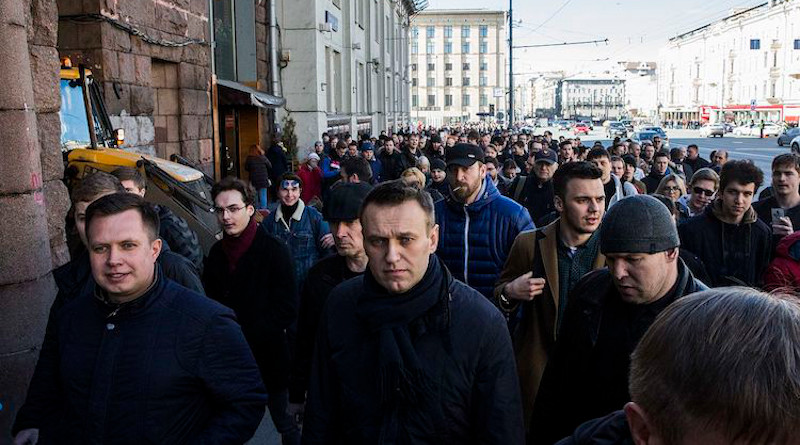


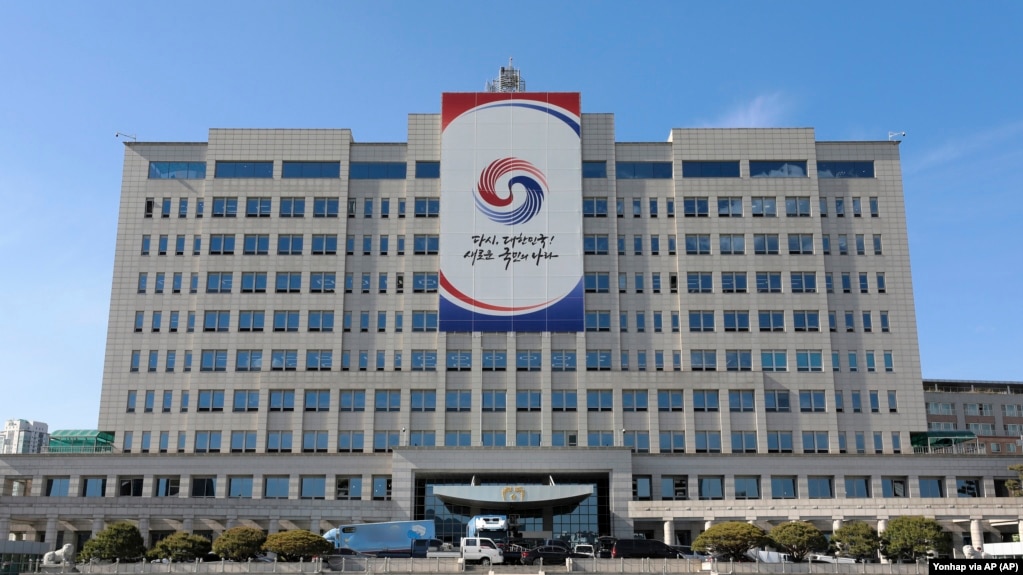
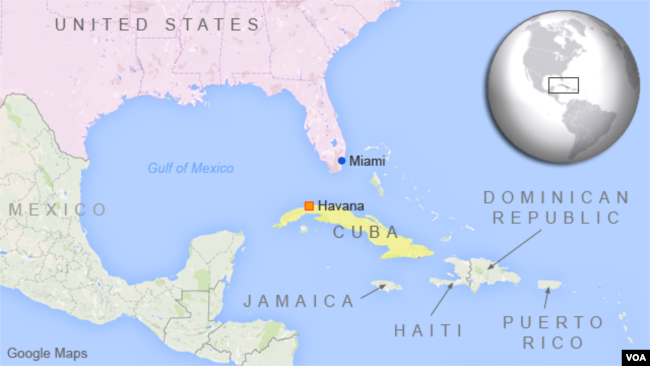 Cuba
Cuba

